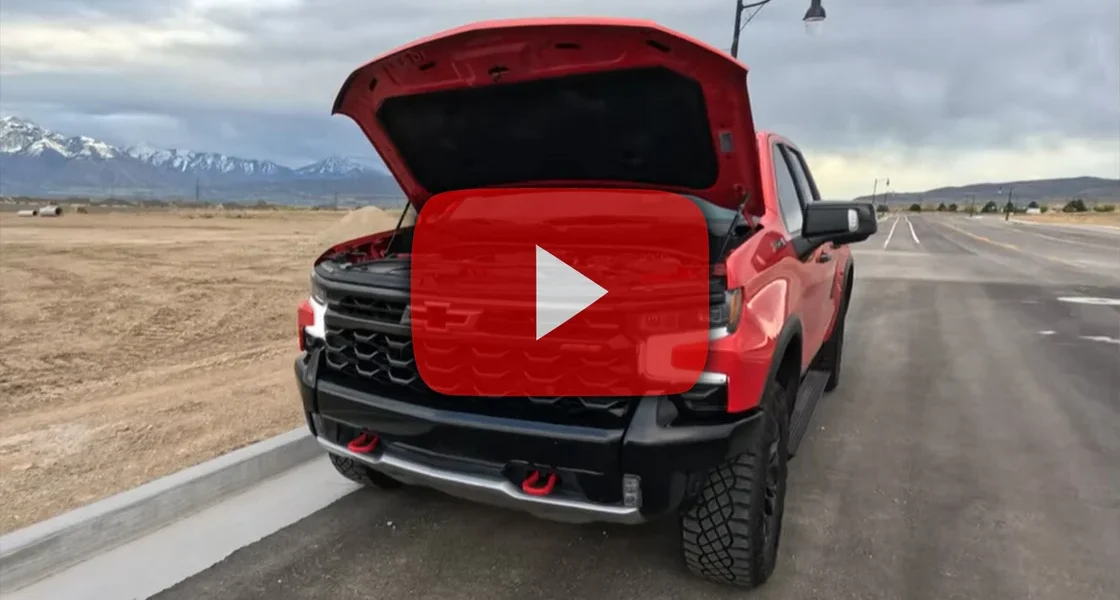iDash Pro DPF Regen Capability on Duramax
The all-new iDash Pro and iDash Data Pro are incredibly powerful instruments that display and record what your dashboard doesn’t. “Yeah, but does it allow me to do a regen on my DPF?” Duramax 6.6L and 3.0L owners ask. Yes, yes, it does. Greg Nelson from Demonworks, demonstrates how the iDash Pro does just that on a newer Duramax 3.0L Diesel LZ0. The video starts with, “You guys ready to hear what a stationary regen sounds like? I will tell you, it is horrendous! We’re going to make so much noise! If you want to upset your neighbors, this is the way to go.”

While the iDash makes it easy, it’s not just a button press, and you clear out soot trapped in the DPF. Warnings on the iDash’s screens advise you how to safely proceed with the operation. “Basically, you want to make sure that everything is good before doing this,” says Greg, referring to various temperatures, fuel level, and conducting the act in an open and ventilated area with nothing flammable nearby. “You don’t want to do this in a garage; you want to do this somewhere safe.” In order to burn off the soot (unburnt fuel), the system is super-heated. The exhaust gas exiting the tip can easily exceed 800°F during this 15+ minute process.
As the regeneration process comes to an end with the soot level at 1% and the RPM and temperatures start to slowly drop, the iDash automatically changes from regen monitoring back to its original user-set configuration. “That’s pretty cool,” says Greg, clearly impressed.
Full Video Transcript
00:00 Soot level is coming down. So, this will rapidly burn off all the soot inside the exhaust system. All right, you guys ready to hear what a stationary regen sounds like? I will tell you, it is horrendous. We are going to make so much noise. As you can see, I have the hood
00:18 popped and uh that’s to allow air flow. I am in a safe area where nobody’s around. This is going to get really hot. It’s going to get really loud. If you want to upset your neighbors, this is the way to go. Let’s go ahead and get this. Uh, a lot of warnings on there.
00:34 These are all very important warnings, too. Check coolant level. Yeah. Basically, you want to make sure everything um is all good before doing this, for sure. Lots of warnings. That’s good because you should know what you’re doing. So, don’t do this unless you need to. Do you want to proceed with
00:52 stationary regen? We absolutely do. You ready for this? I am. You can hear the RPM’s climbing right now. So, we do have high temps coming out of the tail pipe. You need to make sure that you are nowhere near any shrubbery bushes or anything like that. Probably don’t do that. But that was quite warm.
01:35 Let’s go ahead and take a look inside on the gauges. Actually, you heard it just went up. Those are the temps where you do not want to put your hand back there. As you can see, this is why you don’t want to do it in a garage. You want to do it somewhere safe. So, we can see regen is active.
02:12 We’ve got EGT 1 2 3. Temperatures are climbing. So, it’s doing what it needs to be doing. soot level at 63%. So we will see that come down as the temperatures go up for EGT 2 and three which as you can see EGT2 is climbing up there. Three is following. RPMs are sitting at uh what is that
02:40 2750. Now, if you do need to stop this for any reason, uh some sort of emergency or anything, you just have to hit the brake pedal and that will deactivate this Let’s go ahead and check on the temperatures in here. So, you can see our temperatures are up. EGT2 up at
03:39 11:45. EGT3 at 990 and climbing. Soot level is coming down. So, this will rapidly burn off all the soot inside the exhaust system. It’s actually rapidly coming down. I may just let this thing roll and go through its whole regen. I picked an area where nobody would drive by. And here we are. We got
04:01 people driving by. This is a busy road. All right, we are inside the vehicle. Not nearly as loud. Our temperatures are all in control. And this will continue going down. I’m not sure if it’s going to stop at zero or if it stops in the 30s. like a typical regen would when you’re driving
04:37 along. Um, and then once that happens, if it stops in the 30s, typically as you drive and it cools down, it actually goes down closer to zero. But since we’re this close, and you can see how quickly that’s dropping down, we will just run this to the full extent. We’ll
04:52 run this to the end. May as well at this point. That’s our transmission temperature right there. Our engine coolant temperature sitting at 217. So everything is in check. S level 42%. Like I said, this is just dropping rapidly. Engine oil temp is at 230. So it’s all in check or drop down
05:17 to 39% pretty soon. So this should actually cut off pretty soon unless it’s going to run it all the way down to zero. And at this point I’m very curious if that’s going to be the case. Here we go. We’re in the 20s. So clearly it’s not going to stop early. We’ll see if this runs it all the way down to
05:38 zero. I GT2 creeping up over,200°. Look at that soot level just dropping rapidly at 16%. So I’m going to roll down the window and we’re going to be able to hear it once it shuts off and we’ll watch the temperatures drop because it’s nearing completion right now. So, here comes a bunch of
06:01 noise. Actually, minimal change in noise. The difference between the 3.0 and the 66 is that when the 66 does a manual regen, the amount of fan noise that comes out of there is horrendous. But the 3.0 is actually a lot quieter when you’re doing a manual regen. Now, you can see we’re sitting at
06:24 13%, so it should shut down uh fairly soon. And then what it’s going to do is try to slowly well what it should do is slowly bring down the RPMs and uh allow it to cool down before it’s actually deactivated. You can see regen is active right there. And that will change to off when it’s
06:48 completed. There we go. Stationary regen ended. And as you can see, it actually flipped the gauge back to my normal setup that I had on there. That’s pretty cool. So, when you’re running a regen, stationary regen, it actually goes into its own setup there that shows all the
07:08 temperatures. I think that’s super cool. And as you can see, the RPMs are down below a th00and at this point. And what it’s doing is it’s trying to get these temperatures down, and it’s going to slowly do that. So, that’s a good time to let it idle. let it do its thing. I’m
07:24 going to go ahead and close the hood and uh if I start driving, there’s going to be a little bit more air flow, which is going to help bring these temperatures down. So, I’m going to go ahead and close the hood. We’ll check back in on this All right, I’m in drive. I’m going to go
08:00 ahead and just drive to get some air flow going through this and it will help it bring that temperature down. But that was a stationary regen. Not a whole lot going on to it. Like I said, the 3.0’s are quieter than the 66s. The 6.6 Duramax. Oh my gosh, that is loud. That sounds like a jet
08:19 engine landing or taking off, however you want to look at
Banks iDash Pro & Data Pro Digital Datalogger
Banks iDash Data Pro Standalone Gauge
iDash Helps Plan For Regens
2022 Duramax Gets an Informative Instrument


